On March 22, 2025, migratory egrets successively arrived and perched deep within the reed marshes of the Guhai Ecological Park located in the southern suburb of Karamay City, bringing vibrant vitality to early spring in Karamay.
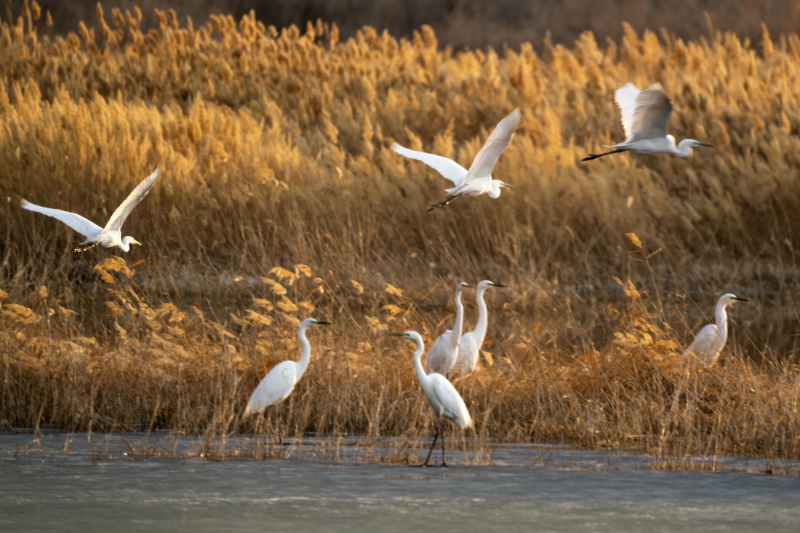
Photo taken on March 23, 2025 shows migratory egrets rest within the reed marshes of Guhai Ecological Park in Karamay City, northwest China's Xinjiang Uygur Autonomous Region. (Photo by Min Yong)
As winter fades and spring arrives, the season of bird migration begins again. Since late March, the weather in Karamay City has continued to warm, and the ice that had frozen for months gradually melted. Migratory birds that spent the winter in the south have started returning one after another. They make brief stops in Karamay to rest and replenish their energy before continuing their journey north. A small number of these birds will stay behind, making the city their home, some even nesting and raising their young here.
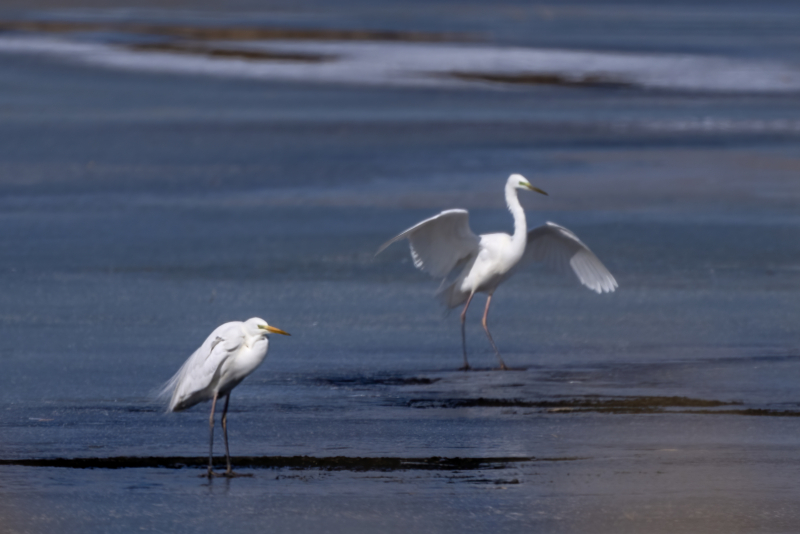
Photo taken on March 15, 2025 shows a pair of egrets alight on the ice surface of Guhai Ecological Park in Karamay City, northwest China's Xinjiang Uygur Autonomous Region. (Photo by Min Yong)
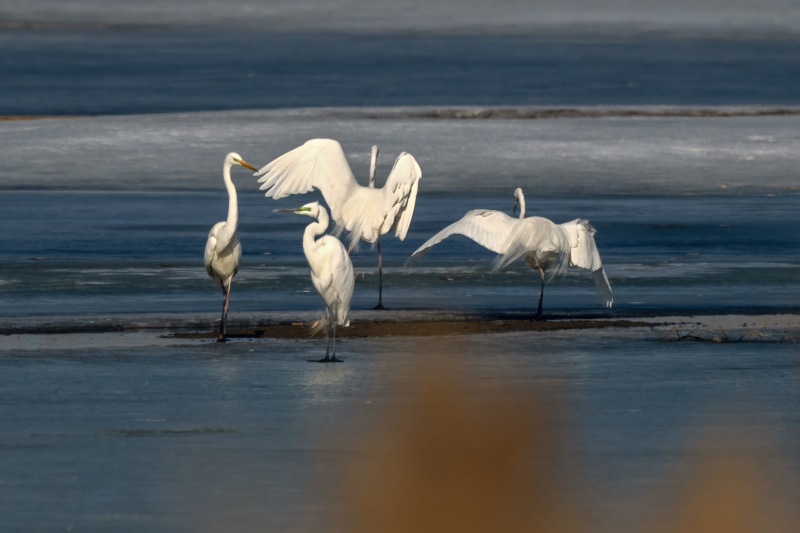
Photo taken on March 16, 2025 shows egrets gather the reed marshes of Guhai Ecological Park in Karamay City, northwest China's Xinjiang Uygur Autonomous Region. (Photo by Min Yong)
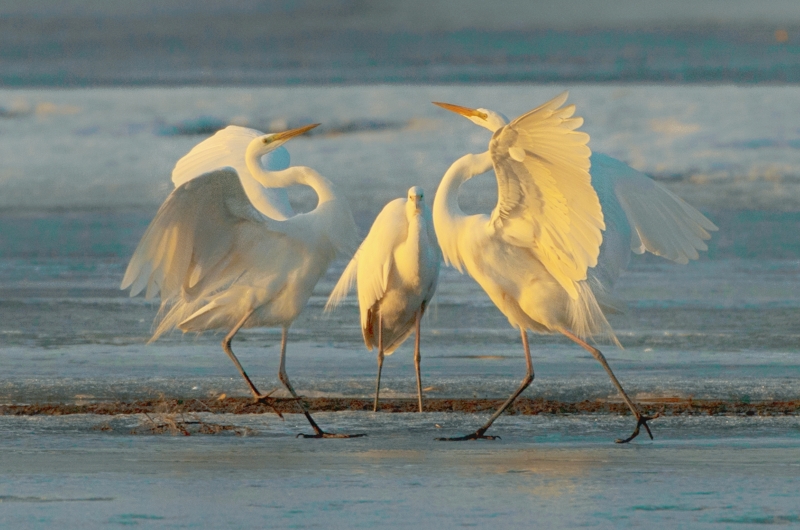
Photo taken on March 16, 2025 shows golden sunset light spills across the ice as the egrets dance in the glow at Guhai Ecological Park in Karamay City, northwest China's Xinjiang Uygur Autonomous Region. (Photo by Min Yong)

Photo taken on March 18, 2025 shows egrets gather on the ice surface of Guhai Ecological Park in Karamay City, northwest China's Xinjiang Uygur Autonomous Region. (Photo by Min Yong)
The egrets living in Karamay are primarily Great Egrets (ardea alba), classified as a protected wildlife species in China of important ecological, scientific and research significance. With entirely white plumage, the Great Egret is one of the larger species among egrets, typically inhabiting coastal areas, lakes, and rivers. Highly vigilant, they flee at the sight of humans and feed on small fish, shrimp, and other aquatic organisms. In 2024, the Karamay Wildlife Conservation Association recorded their breeding process for the first time in the Guhai Ecological Park.
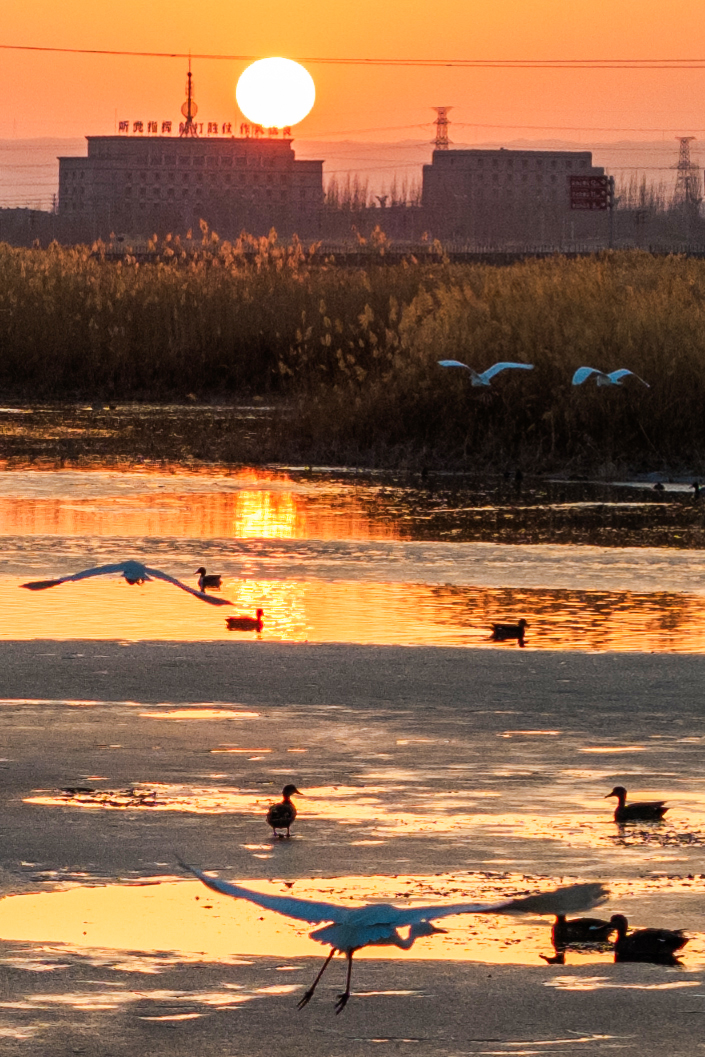
Photo taken on March 18, 2025 shows egrets fly over the ice surface of Guhai Ecological Park in Karamay City, northwest China's Xinjiang Uygur Autonomous Region. (Photo by Min Yong)
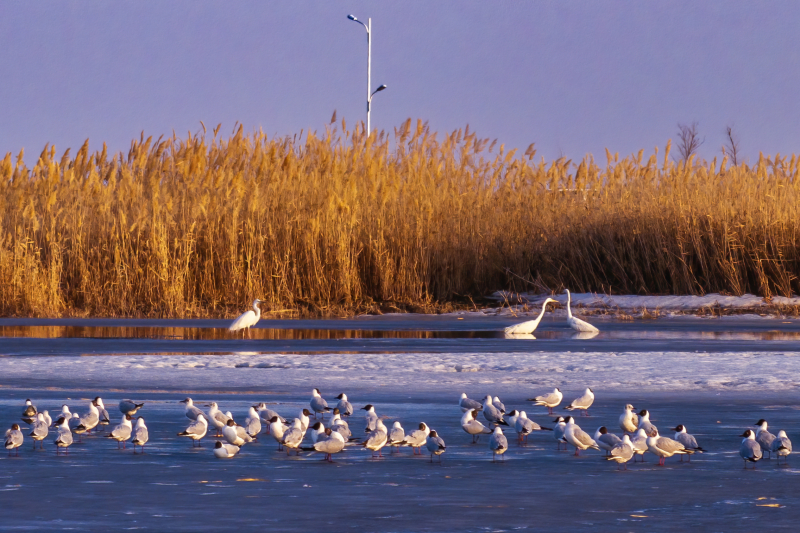
Photo taken on March 18, 2025 shows egrets and gulls gather at Guhai Ecological Park in Karamay City, northwest China's Xinjiang Uygur Autonomous Region. (Photo by Min Yong)
In recent years, systematic ecological projects including desert vegetation restoration, wetland rehabilitation, water system management, mine reclamation, and flood control channels, have been implemented and put into operation in and around Karamay City. These efforts have led to continuous improvements in the local ecological environment. During the annual spring and autumn migratory seasons, an increasing number of migratory birds now stop over or take up temporary residence in the area.

Photo taken on March 15, 2025 shows two pairs of egrets alight at Guhai Ecological Park in Karamay City, northwest China's Xinjiang Uygur Autonomous Region. (Photo by Min Yong)
Among them are wild ducks such as ruddy shelducks and northern shovelers, herons like great egrets and grey herons, gulls including black-headed gulls and Caspian gulls, as well as waders such as common redshanks and pied avocets, along with migratory birds like greylag geese and wild cormorants. The most abundant groups in terms of both species and numbers are the ducks and gulls, comprising over 10 species with populations exceeding 200 individuals.
(Correspondents Min Yong and Zhai Jinkang from the Media Convergence Center of Karamay City)
(A written permission shall be obtained for reprinting, excerpting, copying and mirroring of the contents published on this website. Unauthorized aforementioned act shall be deemed an infringement, of which the actor shall be held accountable under the law.)









